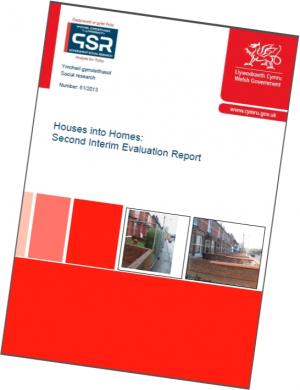



The latest evaluation report on the Welsh Houses to Homes initiative shows the Welsh authoriteis to be getting into their stride with significant outputs already reported in many areas. Whilst only 45 loans had been approved, there were a further 179 being processed. As the experience in Kent suggests around 90% of applications are approved, the Welsh total should not be far short of the 179 figure.
The benefits are reported to go beyond just the outputs of the scheme:
Houses into Homes was reported to have resulted in an increase in corporate commitment and spending to tackle the problem of empty homes, an increase in staff working to bring empty properties back into use, better intelligence about the problem of empty homes, and improvements in collaborative working within and between local authorities and their partners.
These are exactly the sorts out outcome that we said ought to be delivered by the English empty homes programmes, but whereas the establishment of a strategic framework has always informed the Welsh intiative the English scene is sadly lacking in such features.
Building capacity and infrastructure
In particular the research team notes that
the regional groups werer reported to have made an important contribution to the deilvery of Houses into Homes and brough various benefits in their wake...
The national steering group was reported to have generated momentum behind delivery...and to have provided a valuable forum in which regions could share expereiences, secure advice and gudiance and raise issues directly with the Welsh Government....
...the majority of local authority empty homes officers reported that Houses into Homes was helping their local authority address strategic priorities in other policy areas including regeneration, neighbourhood renewal, public health, homelessness, affordable housing, housing needs, and training and employment.
Facts and figures
This second report by the Centre for Regional Economic and Social Resarch at Sheffield Hallam University covers the first year of the scheme, ie. 2012-13; the first evaluation covered the period ti to the end of September 2012. Other key findings are:
- owners struggling with the complexities of the application process
- the maximum 80% Loan-to-Value (LTV) requirement is a challenge in many cases
- significant differences between the profile of schemes put forward by developers compared with private individuals
- significant differences between schemes involving additional units (ie conversions) compared with the classic "return-to-use" scenario.
